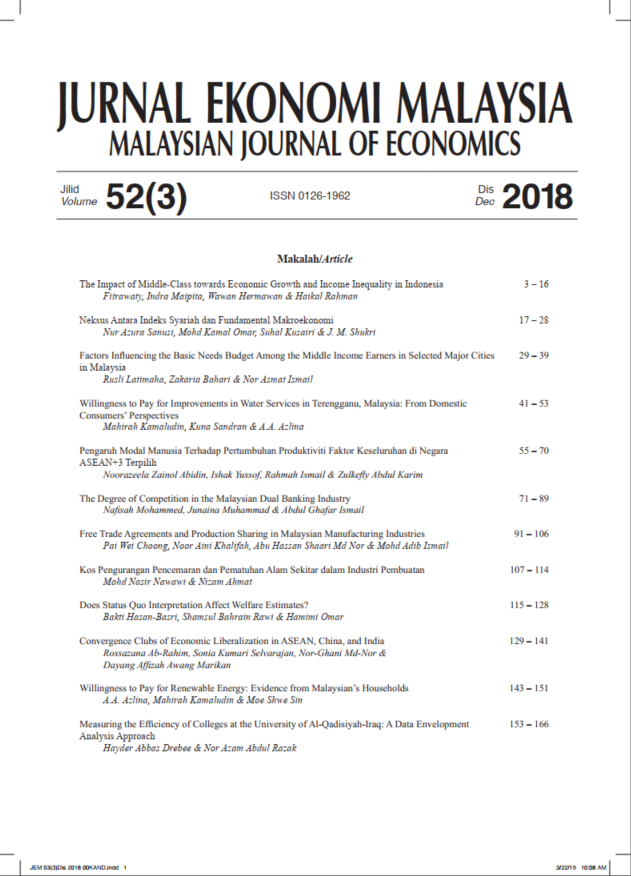Jurnal Ekonomi Malaysia
52 (3) 2018 3 – 16
Abstract
This study aims to elucidate the impact of inequality level in the middle-class income distribution on Indonesia’s economic growth by using the 2004-2012 national socioeconomic survey data (Susenas) and 2008 Input-Output Table. The results of the 20-year GDP data estimation show that the value of Marginal Propensity to Consume (MPC) is 0.779 which means that 77.9 percent of income is utilised for consumption. Analysis results using I-O Table found that the inequality level of income distribution at the national level is higher than that in the middle-class level. This applies to both middle-class criteria used in this study; (1) income criteria USD10-USD100, and (2) criteria of 60% in the middle percentile (between 20 to 80 percentiles). In the province, income distribution inequality between the provincial level and the middle-class level is relatively varied as illustrated by the highest Gini index value that doubled the lowest Gini index. Analysis results also show that the increas in income of the middle-class has an impact on the increase of consumption, but has no significant influence on economic growth. The 20% increase in middle-class income can only boost economic growth by less than 1 percent. This suggests that the output changes in response to the shifts happening in the middle-class income are not flexible. From the two middle-class criteria used, the first criterion is not suitable for Indonesia because of the fluctuating exchange rates which cause the middle-class to fluctuate and to widen.
Keywords
Bibliography
@article{fitrawaty,
title={The Impact of Middle-Class towards Economic Growth and Income Inequality in Indonesia},
author={Fitrawaty, and Maipita, Indra and Hermawan, Wawan and Rahman, Haikal},
journal={Jurnal Ekonomi Malaysia},
volume={52},
number={3},
pages={3—16},
}
Receive updates when new articles are published.


